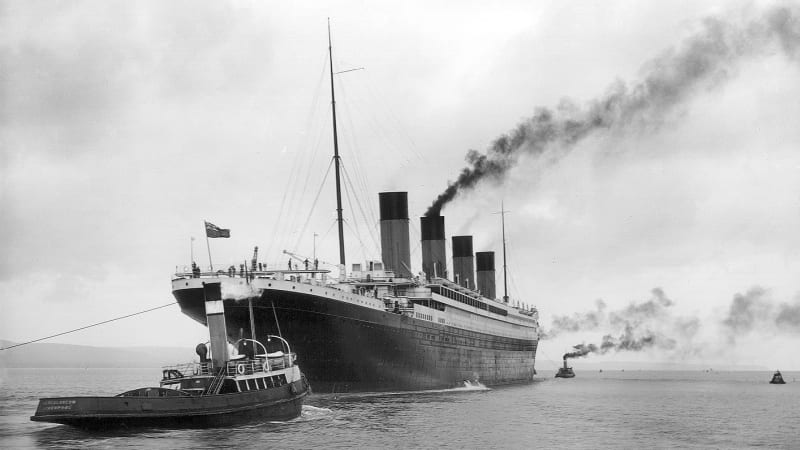LAKE MICHIGAN ALMOST AS COLD AS TITANIC’S GRAVE SITE
By: Will Mendelson

Image courtesy of Robert John Welch/WIKIMEDIA COMMONS
On April 15, 1912, Titanic plummeted to the bottom of the Atlantic Ocean, taking hundreds of passengers along with it. Approximately 1,500 passengers and crew died that night, many of them floating frozen on the dark waters.
Some 710 people survived in lifeboats before the RMS Carpathia rescued them hours later.
“Just the temperature of the water really was the cause of death for most of the people,” said Dr. Rahul K. Khare, a professor and emergency medicine expert at Northwestern University’s Feinberg School of Medicine.
Most people may know that the passengers predominantly died of hypothermia in the frigid North Atlantic but beware if you are on a vessel that capsizes closer to home. The water temperature of the Atlantic Ocean that night was strikingly similar to the water temperature of Lake Michigan right now.
Lake Michigan’s recorded water temperature for April 12 was 32.9 degrees. On the evening Titanic sank, the reported water temperature of the Atlantic was 28 degrees. The average Lake Michigan water temperature during winter is 26 degrees, according to the U.S. Coast Guard.
While the water temperatures of the two bodies of water are very similar, the outcome for passengers and sailors who might capsize today in the lake are far more hopeful, according to Khare.
When water temperatures fall between 32 to 40 degrees, people have anywhere from 15 to 30 minutes until they become delirious and then unconscious, according to Khare. While they are not yet dead, their body temperatures drop below 95 degrees, and this constitutes hypothermia. The expected time of survival after someone hits the water is between 30 to 90 minutes before they freeze to death.
However, the average survival time depends on the amount of body fat and the clothing the person wears, Khare said. Floating on an object – like the door that served as a raft for Rose in the movie “Titanic” – buys time.
So you can survive for 90 minutes, but efficient rescue time is vital. When Titanic sank, the one lifeboat that came back to look for passengers found only seven still alive.
“In theory, even though there is only four degrees difference, it is pretty significant,” Khare said. “The ocean is a lot rougher, and you’re going to be expending energy, even if you have something to hold onto.”
In general, waters are calmer in Lake Michigan. However, wind or rain can render them pretty dangerous as well, offering similar risks to the rough waters in the ocean.
“But, really, it was the amount of time rescue ships could get to them; that was the biggest issue,” said Khare.
No rescue crew was quite prepared; after all, Titanic was thought to be unsinkable.
“In Chicago, the technology we have today is very quick, especially in winter months,” Khare said. “The people we have here, they treat water rescue seriously. If there is an alert, people are jumping and going quickly.”
In the winter and early spring months, there are no lifeguards yet patrolling Lake Michigan. However, the U.S. Coast Guard’s rescue team works all year long and their rescue process demonstrates just how important time is when it comes to saving lives.
“We do our best to get to the scene as quick as possible,” said Brent Guynes, at the U.S. Coast Guard station in Wilmette. “We take information down, and we have a search and rescue alarm. Then we get on the boat and, if we know the position, then we go straight there.”
Computer GPS systems can identify location now and new technology in general makes rescue time much more efficient.
“While we’re going out, we also have guys up in Milwaukee and they have this awesome computer program that puts together information, like winds, etc. And they come up with a search pattern that helps us locate the scene,” Guynes said.
He and his crew are specially trained and have years of experience in dealing with rescue operations on Lake Michigan, Guynes said.
